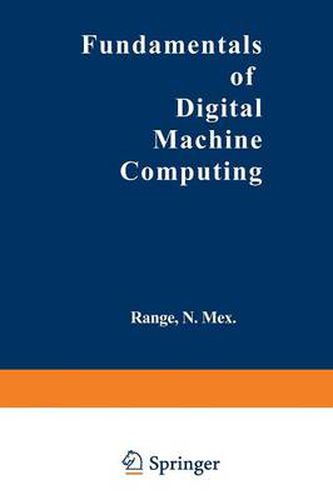Readings Newsletter
Become a Readings Member to make your shopping experience even easier.
Sign in or sign up for free!
You’re not far away from qualifying for FREE standard shipping within Australia
You’ve qualified for FREE standard shipping within Australia
The cart is loading…






This title is printed to order. This book may have been self-published. If so, we cannot guarantee the quality of the content. In the main most books will have gone through the editing process however some may not. We therefore suggest that you be aware of this before ordering this book. If in doubt check either the author or publisher’s details as we are unable to accept any returns unless they are faulty. Please contact us if you have any questions.
The first industrial revolution was concerned with the ma- chine solely as an alternative to human muscle. It displaced man and animal as a source of power, without appreciably affecting other human functions. The development of auto- mation which can handle problems of programming on an automatic basis will, to a large extent, condition the entire social and technical life of the future. The picture of the auto- matic age will be quite different from the picture of any other period. The technical revolution of automation will bring deeper and more incisive changes to man’s life than did the first industrial revolution. The digital computer is the universal machine which has already revolutionized modern technology and which will be the main instrument to render factories and business places automatic. The digital computer has brought increased im- petus and new direction to the whole field of applied mathe- matics and to the description of problems in precisely defined and solvable relations. Since the arrival of digital computers, applied mathematics takes a place of importance at least equal to abstract mathematics. Modern engineers and scientists have become more conscious of the powerful tool of mathe- matical analysis through the use of computers.
$9.00 standard shipping within Australia
FREE standard shipping within Australia for orders over $100.00
Express & International shipping calculated at checkout
This title is printed to order. This book may have been self-published. If so, we cannot guarantee the quality of the content. In the main most books will have gone through the editing process however some may not. We therefore suggest that you be aware of this before ordering this book. If in doubt check either the author or publisher’s details as we are unable to accept any returns unless they are faulty. Please contact us if you have any questions.
The first industrial revolution was concerned with the ma- chine solely as an alternative to human muscle. It displaced man and animal as a source of power, without appreciably affecting other human functions. The development of auto- mation which can handle problems of programming on an automatic basis will, to a large extent, condition the entire social and technical life of the future. The picture of the auto- matic age will be quite different from the picture of any other period. The technical revolution of automation will bring deeper and more incisive changes to man’s life than did the first industrial revolution. The digital computer is the universal machine which has already revolutionized modern technology and which will be the main instrument to render factories and business places automatic. The digital computer has brought increased im- petus and new direction to the whole field of applied mathe- matics and to the description of problems in precisely defined and solvable relations. Since the arrival of digital computers, applied mathematics takes a place of importance at least equal to abstract mathematics. Modern engineers and scientists have become more conscious of the powerful tool of mathe- matical analysis through the use of computers.